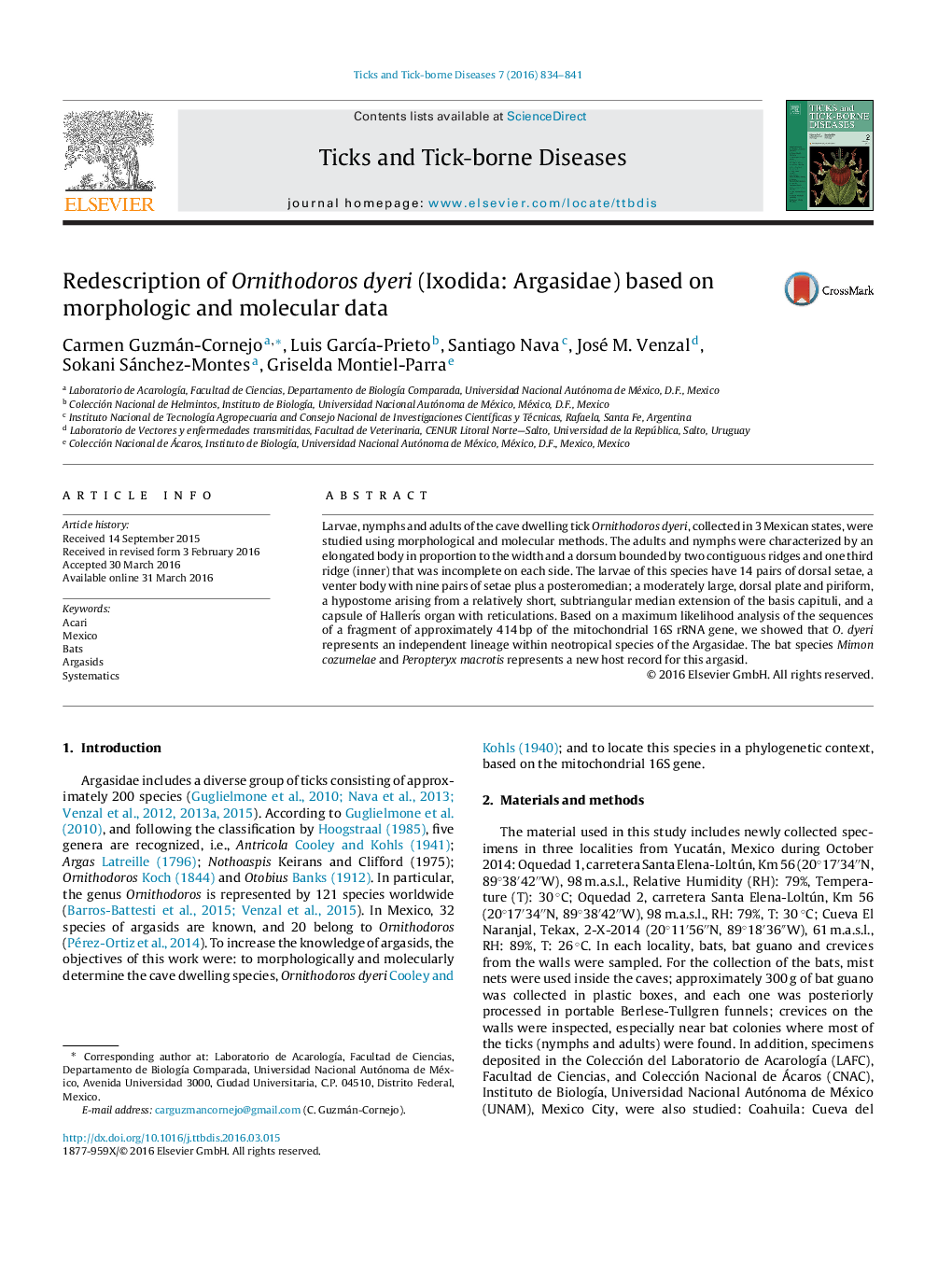| Article ID | Journal | Published Year | Pages | File Type |
|---|---|---|---|---|
| 5546399 | Ticks and Tick-borne Diseases | 2016 | 8 Pages |
Larvae, nymphs and adults of the cave dwelling tick Ornithodoros dyeri, collected in 3 Mexican states, were studied using morphological and molecular methods. The adults and nymphs were characterized by an elongated body in proportion to the width and a dorsum bounded by two contiguous ridges and one third ridge (inner) that was incomplete on each side. The larvae of this species have 14 pairs of dorsal setae, a venter body with nine pairs of setae plus a posteromedian; a moderately large, dorsal plate and piriform, a hypostome arising from a relatively short, subtriangular median extension of the basis capituli, and a capsule of HalleÅs organ with reticulations. Based on a maximum likelihood analysis of the sequences of a fragment of approximately 414Â bp of the mitochondrial 16S rRNA gene, we showed that O. dyeri represents an independent lineage within neotropical species of the Argasidae. The bat species Mimon cozumelae and Peropteryx macrotis represents a new host record for this argasid.
